-
德昌杉(Cunninghamia unicanaliculata) 是20世纪70年代在四川省凉山州德昌县发现的杉木属新种[1-2],主要集中分布于四川省凉山州的德昌县、盐源县和攀枝花市的米易县等海拔1300~2900 m地带[3-4]。为大乔木,高达50 m,胸径可达3 m[5],冠幅小,材质优良,单位面积产材量高[6],是培育杉木速生材、大径材的优良种质资源[7],为国家三级保护树种,川西南山地一个极为重要的速生用材树种之一[8-9],也是优良的民用建筑用材树种,具有较大的开发利用价值。
目前国内外对德昌杉的研究相对较少,主要包括组织培养[10]、胞核学[4]、有效成分分析等方面的研究[9]。异速生长关系(Allometric relationship) 是指生物体某两个性状的相对生长速率不相同的现象[11],是由物种遗传性所决定的固有特性,普遍存在于生物界[12]。其数学模型为生物学特征与个体大小之间的幂函数关系[13, 14],能够揭示植物生物学特征间的与尺度无关的内在规律[15, 16]。胸径反映了树木的机械支持功能和水分吸收能力[17],树高反映了植物争夺光资源的能力[18];冠幅体现了树木转化和利用太阳能的能力,以及植物与土壤和大气交换热量、水分和其他物质的能力[19],它们综合反映了植物的光合同化能力。不同个体会在主要功能性状间形成异速生长的资源配置模式,体现了植物表型可塑性机制的环境适应性[20]。
本文以种子园的38年生德昌杉为研究对象,针对其胸径、树高和冠幅从异速生长指数上分析不同无性系在生长量上的差异,以期深入了解德昌杉主要功能性状生长量在不同无性系间的差异,对今后开展德昌杉优良无性系的早期选择提供理论基础。
HTML
-
种子园建于1980年,位于凉山州德昌县茨达乡万年沟村的峡谷之中,东经102°05′35′′,北纬27°10′52′′,种子园面积8.18 hm2。气候属亚热带高原季风气候,海拔1 717~1 944 m,年均温17.6 ℃,极端低温−11.1 ℃,极端高温37.8 ℃,活动积温(≥10 ℃积温)1 600 ℃以上,日照时数2 117.8 h,年均降水量1 056.6 mm,年蒸发量1 543.8 mm,年平均相对湿度为64%,无霜期300 d以上,土壤为山地棕壤,质地沙壤土。建园材料来源于1979年培育的优树无性系嫁接苗,无性系排列方式为顺序错位排列法,株行距6 m×6 m。
-
2017年7月在德昌杉初级无性系种子园进行测量工作(共30个无性系,每个无性系有19~36个无性系分株,总计870个无性系分株),测量胸径、树高和冠幅。通过Microsoft office 2013整理、计算数据,利用SPSS 22.0进行方差分析和多重比较。变异系数的计算公式:
$ {\bar X} $ 为某性状试验平均数,Sx为标准差,CV为变异系数。以每个无性系19~36个个体的数据为基础,采用标准化主轴回归(SMA)分析[21]获得不同无性系异速生长方程的参数估测值,由(S)MATR Version 2.0[22]计算完成建立各无性系之间的异速生长方程。异速生长方程采用幂函数(Y=αXβ)的形式表示[23],线性转化为log Y=log α+β·log X,式中,Y与X代表不同器官生长量;α为方程的截距;β为方程斜率,即器官间的异速生长指数(β=SMA斜率)。当β=1时,表示两者是等速关系;当b>1时,表示Y的增加程度大于X的增加程度;当b<1时,表示Y的增加程度小于X的增加程度。
1.1. 材料
1.2. 数据获取及处理方法
-
德昌杉无性系生长量测量结果表明,无性系分株数的变幅为19~36;总体平均地径为28.24 cm,其变异系数均值为0.29,其中29号无性系的地径最大为31.45 cm,14号无性系的地径最低为24.09 cm;总体平均树高为19.18 cm,其变异系数均值为0.19,其中9号无性系最高为20.54 cm,1号无性系的苗木最低为17.26 cm;总体平均冠服为5.18 cm,其变异系数均值为0.24,其中17号无性系冠幅最大为5.65 cm,14号无性系的冠幅最小为17.26 cm(见表1)。
无性系号 无性系分株数 胸径/cm 树高/m 冠幅/m 平均值 变异系数 平均值 变异系数 平均值 变异系数 1 27 24.71±7.64b 0.31 17.26±4.19b 0.24 4.81±1.10b 0.23 2 25 26.82±8.16b 0.30 18.68±4.15ab 0.22 5.08±1.36ab 0.27 3 30 28.17±7.54ab 0.27 19.01±3.86ab 0.20 5.26±1.47ab 0.28 4 29 30.43±9.04ab 0.30 19.79±3.03ab 0.15 5.56±1.33ab 0.24 5 33 26.96±7.40b 0.27 19.85±3.93ab 0.20 5.04±1.01ab 0.20 6 27 28.09±8.90ab 0.32 19.61±3.78ab 0.19 5.05±1.17ab 0.23 7 21 27.09±8.08ab 0.30 18.30±4.16b 0.23 5.06±1.08ab 0.21 8 26 28.32±8.29ab 0.29 18.53±3.81ab 0.21 5.18±1.41ab 0.27 9 19 29.18±9.18ab 0.31 20.54±3.05a 0.15 4.94±1.25b 0.25 10 34 28.18±8.07ab 0.29 18.93±3.27ab 0.17 5.47±1.29ab 0.24 11 30 27.93±8.64ab 0.31 19.10±3.59ab 0.19 5.04±1.51ab 0.30 12 31 27.75±8.65ab 0.31 18.40±4.02b 0.22 5.35±1.36ab 0.25 13 30 28.63±8.95ab 0.31 18.33±3.62b 0.20 5.09±1.24ab 0.24 14 24 24.09±7.31b 0.30 18.48±3.26ab 0.18 4.67±0.99b 0.21 15 36 28.99±7.99ab 0.28 19.36±3.38ab 0.17 5.52±1.29ab 0.23 16 29 28.19±6.20ab 0.22 18.44±3.86b 0.21 5.09±0.85ab 0.17 17 28 29.54±6.45ab 0.22 20.06±3.12ab 0.16 5.65±1.19a 0.21 18 32 26.13±9.16b 0.35 18.43±3.96b 0.21 4.85±1.09b 0.22 19 31 28.87±9.21ab 0.32 19.11±3.29ab 0.17 5.19±1.23ab 0.24 20 34 27.70±7.86ab 0.28 19.20±3.55ab 0.18 5.21±1.23ab 0.24 21 28 26.56±7.93b 0.30 19.03±3.69ab 0.19 4.97±1.24b 0.25 22 25 28.49±9.47ab 0.33 19.33±4.41ab 0.23 4.92±1.18b 0.24 23 26 27.77±8.92ab 0.32 20.20±3.10ab 0.15 5.42±1.32ab 0.24 24 33 27.06±8.35b 0.31 19.09±3.17ab 0.17 4.99±1.16b 0.23 25 32 29.57±9.66ab 0.33 19.28±3.76ab 0.20 5.41±1.31ab 0.24 26 28 29.96±9.37ab 0.31 19.92±3.63ab 0.18 5.64±1.65a 0.29 27 31 29.42±6.58ab 0.22 19.49±3.52ab 0.18 5.02±0.96ab 0.19 28 26 30.94±6.94ab 0.22 19.41±3.17ab 0.16 5.04±1.10ab 0.22 29 35 31.45±8.49a 0.27 19.91±3.79ab 0.19 5.25±1.34ab 0.26 30 30 28.90±6.96ab 0.24 20.21±2.46ab 0.12 5.15±1.08ab 0.21 总计 870 28.24±8.24 0.29 19.18±3.61 0.19 5.18±1.24 0.24 Table 1. Statistics of clonal growth in the primary clonal seed orchard of Cunninghamia unicanaliculata
-
在各无性系中,德昌杉胸径与冠幅均呈极显著正相关关系,异速生长斜率从大到小依次为18、7、14、22、13、16、19和25号无性系,斜率显著高于1,表明其胸径生长速率大于冠幅;其余无性系的SMA斜率接近于1,表明其胸径与冠幅的生长速率相似。在各无性系中,德昌杉胸径与树高除16和28号无性系外,均呈显著正相关关系,异速生长斜率从大到小依次为30、9、23、4、24、19、10、11、14、13、6、15、26、21、18、12和25号无性系,斜率显著高于1,表明其胸径生长速率大于树高;其余无性系的SMA斜率接近于1,表明其胸径与冠幅的生长速率相似(见表2)。通过胸径-冠幅、胸径-树高的异速生长分析,得知德昌杉的在胸径生长量上分配的速率明显高于树高和冠幅。胸径-冠幅和胸径-树高之间的SMA斜率在不同无性系间,无相同的SMA斜率。胸径-冠幅的斜率为0.8804~1.5704,其中18号无性系的斜率最大,为1.5784(95%的置信区间CI=(1.1906,2.0926)),28号无性系的斜率最小,为0.8804(95%的置信区间CI=(0.6397,1.2116))。胸径-树高的斜率为0.9296~2.1633,其中30号无性系的斜率最大,为2.1633(95%的置信区间CI=(1.5636,2.9928),16号无性系的斜率最小,为0.9296(95%的置信区间CI=0.6418和1.3465),表明德昌杉各无性系间的胸径、树高和冠幅的异速生长轨迹发生了显著变化。19、14、13、18和25号无性系在胸径-冠幅和胸径-树高均表现为异速生长,7、22、16和23号无性系在胸径-冠幅上呈现为异速生长,30、9、23、4、24、10、11、6、15、26、21和12号无性系在胸径-树高上呈现为异速生长,其余无性系在胸径-冠幅和胸径-树高均表现为等速生长,表明尽管同为德昌杉,但30个无性系之间没有一致的生长量分配速率,表明德昌杉各无性系因环境因子的长期影响而形成了遗传特性上的差异。
生长指标 无性系 n R2 P SMA 95%CI F p_1.0 生长关系 胸径(y)-冠幅(x) 1 27 0.593 <0.001 1.2792 0.9864~1.6589 3.799 0.063 I 2 24 0.495 <0.001 1.1729 0.8609~1.5979 1.117 0.302 I 3 30 0.659 <0.001 0.9737 0.7782~1.2183 0.059 0.811 I 4 29 0.62 <0.001 1.2303 0.9668~1.5655 3.099 0.090 I 5 33 0.385 <0.001 1.2951 0.9755~1.7193 3.448 0.073 I 6 27 0.511 <0.001 1.2765 0.9608~1.6960 3.110 0.090 I 7 21 0.603 <0.001 1.4744 1.0944~1.9865 7.586 0.013 A 8 26 0.663 <0.001 1.1897 0.9339~1.5155 2.173 0.153 I 9 19 0.523 <0.001 1.1328 0.8012~1.6018 0.557 0.466 I 10 34 0.366 <0.001 1.1297 0.8513~1.4991 0.754 0.392 I 11 30 0.501 <0.001 1.0991 0.8388~1.4400 0.502 0.485 I 12 31 0.538 <0.001 1.2773 0.9894~1.6488 3.835 0.060 I 13 30 0.514 <0.001 1.4025 1.0742~1.8313 6.846 0.014 A 14 24 0.616 <0.001 1.4254 1.0876~1.8683 7.513 0.012 A 15 36 0.654 <0.001 1.1929 0.9733~1.4621 3.094 0.088 I 16 29 0.359 0.001 1.3751 1.0074~1.8771 4.418 0.045 A 17 28 0.365 0.001 1.0816 0.7886~1.4835 0.253 0.619 I 18 32 0.413 <0.001 1.5784 1.1906~2.0926 11.401 0.002 A 19 31 0.602 <0.001 1.3178 1.0395~1.6707 5.698 0.024 A 20 34 0.405 <0.001 1.1619 0.8832~1.5286 1.221 0.277 I 21 28 0.381 <0.001 1.3058 0.9557~1.7840 3.061 0.092 I 22 25 0.509 <0.001 1.4097 1.0467~1.8987 5.745 0.025 A 23 26 0.492 <0.001 1.3353 0.9933~1.7951 4.062 0.055 I 24 33 0.455 <0.001 1.2092 0.9257~1.5795 2.079 0.159 I 25 32 0.519 <0.001 1.3177 1.0203~1.7018 4.871 0.035 A 26 28 0.676 <0.001 1.0998 0.8760~1.3808 0.728 0.401 I 27 31 0.285 0.002 1.0931 0.7970~1.4993 0.322 0.575 I 28 26 0.406 <0.001 0.8804 0.6397~1.2116 0.659 0.425 I 29 35 0.42 <0.001 1.0668 0.8171~1.3928 0.238 0.629 I 30 30 0.578 <0.001 1.2273 0.9570~1.5739 2.824 0.104 I 胸径(y)-树高(x) 1 27 0.129 0.066 1.0839 0.7446~1.5779 0.187 0.669 I 2 24 0.194 0.031 1.2652 0.8589~1.8636 1.537 0.228 I 3 30 0.364 <0.001 1.2309 0.9082~1.6684 1.927 0.176 I 4 29 0.267 0.004 1.7514 1.2567~2.4409 12.833 0.001 A 5 33 0.407 <0.001 1.3050 0.9877~1.7243 3.790 0.061 I 6 27 0.61 <0.001 1.5212 1.1794~1.9619 11.959 0.002 A 7 21 0.327 0.007 1.2474 0.8492~1.8323 1.401 0.251 I 8 26 0.155 0.047 1.3319 0.9124~1.9443 2.396 0.135 I 9 19 0.607 <0.001 2.0039 1.4617~2.7472 24.496 0.000 A 10 34 0.417 <0.001 1.6196 1.2344~2.1250 13.781 0.001 A 11 30 0.663 <0.001 1.5507 1.2411~1.9376 17.067 0.000 A 12 31 0.337 0.001 1.3779 1.0162~1.8684 4.653 0.039 A 13 30 0.173 0.022 1.5250 1.0800~2.1534 6.400 0.017 A 14 24 0.566 <0.001 1.5438 1.1581~2.0579 10.163 0.004 A 15 36 0.223 0.004 1.4884 1.0997~2.0144 7.289 0.011 A 16 29 0.079 0.140 0.9296 0.6418~1.3465 0.156 0.696 I 17 28 0.275 0.004 1.2318 0.8796~1.7251 1.582 0.220 I 18 32 0.323 0.001 1.4666 1.0841~1.9842 6.820 0.014 A 19 31 0.148 0.033 1.6829 1.1934~2.3732 10.087 0.004 A 20 34 0.255 0.002 1.3550 0.9978~1.8403 4.087 0.052 I 21 28 0.564 <0.001 1.4709 1.1305~1.9139 9.322 0.005 A 22 25 0.512 <0.001 1.2794 0.9508~1.7217 2.921 0.101 I 23 26 0.274 <0.001 1.7924 1.2610~2.5478 12.595 0.002 A 24 33 0.441 <0.001 1.6881 1.2880~2.2125 16.651 0.000 A 25 32 0.333 0.001 1.3723 1.0166~1.8525 4.658 0.039 A 26 28 0.371 0.001 1.4823 1.0822~2.0302 6.739 0.015 A 27 31 0.339 0.001 1.1492 0.8479~1.5577 0.854 0.363 I 28 26 0.135 0.065 1.1913 0.8128~1.7462 0.859 0.363 I 29 35 0.301 0.001 1.2247 0.9146~1.6399 1.967 0.170 I 30 30 0.272 0.003 2.1633 1.5636~2.9928 27.816 0.000 A 注:A表示异速生长;I表示等速生长 Table 2. Standardized major axis regression (SMA) analysis of height, crown width, and DBH of Cunninghamia unicanaliculata
2.1. 无性系生长量的差异
2.2. 德昌杉胸径-树高、胸径-冠幅异速生长关系
-
在植物个体生长发育的过程中,采用不同器官间不同的生长量分配模式,是植物为维持其生长发育和繁殖的一个生活史对策[24, 25]。在异速生长关系分析中,德昌杉的胸径、树高和冠幅在无性系间除16和28号无性系的胸径-树高中斜率不显著外,其余均显著,这些差异来源于器官之间不同的相对生长速率,其中18号无性系的胸径生长速率相较于冠幅最快,30号无性系的胸径生长速率相较于树高最快,德昌杉各无性系间异速生长关系体现了无性系间存在着丰富的遗传变异。R2体现了遗传因素对各植物构件生长量分配的影响,本研究中胸径-冠幅的R2为0.285~0.676,胸径-树高R2为0.079~0.676,说明德昌杉无性系各构件之间不同的生长量分配模式,均由遗传因子和环境因素共同控制,也体现了环境对各构件生长的生态可塑性。
-
异速生长方程可以定量描述资源配置和植物生长之间的关系,通过斜率或截距分析可以揭示物种或一类物种部分与整体或部分与部分之间的差异和对比关系[26]。由于植物个体间生长量的分配存在发育漂变,因此植物生长量分配差异可能仅是由植株大小差异所引起,胸径、树高和冠幅与植株大小之间的异速生长轨迹没有发生显著变化[27, 28]。本研究中,德昌杉不同无性系的胸径、树高与冠幅之间既有异速生长表现,也有等速生长表现 (见表2),即德昌杉异速生长轨迹发生了显著变化,表明德昌杉不同无性系间存在不同的相对生长速率。尽管为同一物种,德昌杉各无性系间却无一致的异速生长关系,体现了德昌杉无性系环境因子的长期影响而形成了遗传特性上的差异,这种异速生长关系在同一物种间的变异在一些无性系、无性系和不同地理种源上都有体现[29-30]。德昌杉不同无性系间的异速生长指数在遗传上的差异为德昌杉优良无性系的早期选择提供了可能性。






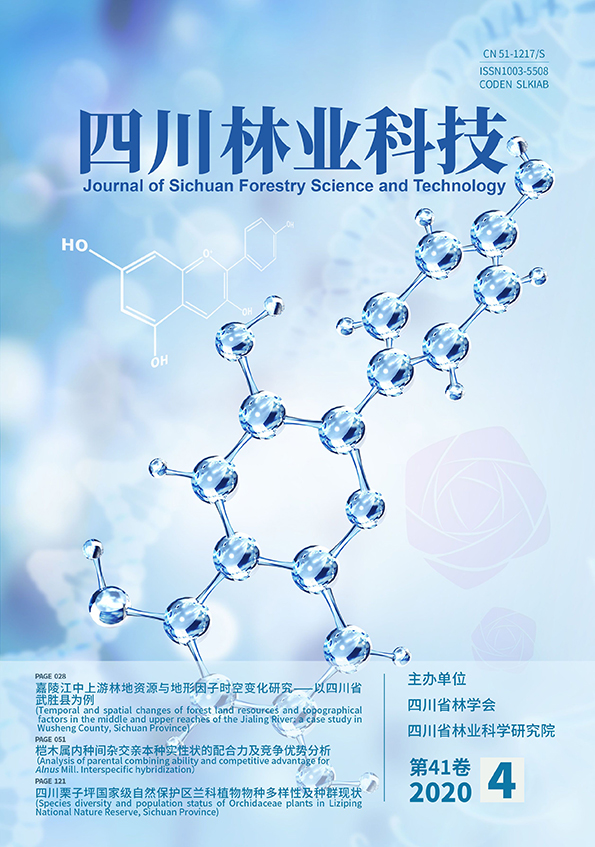





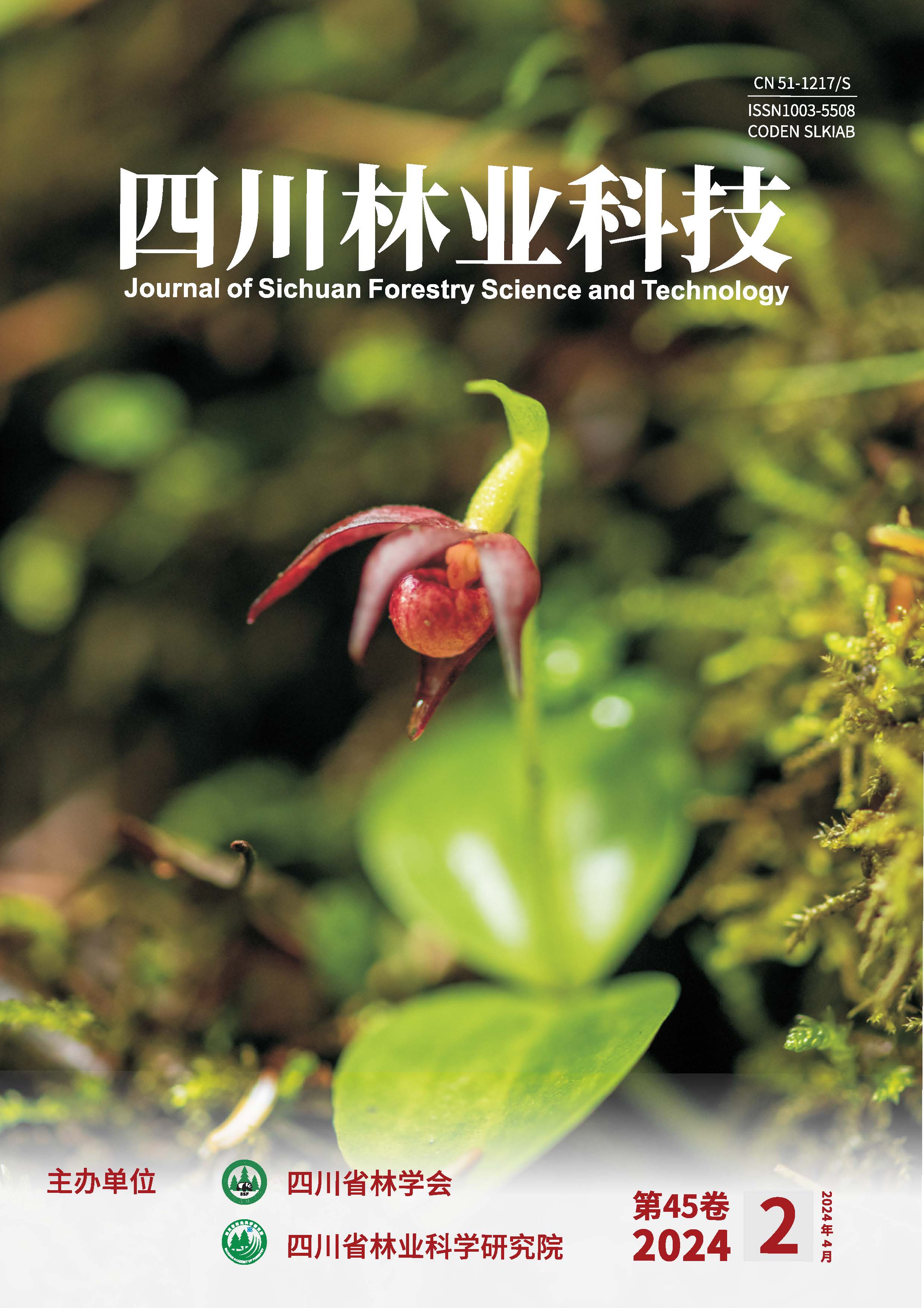
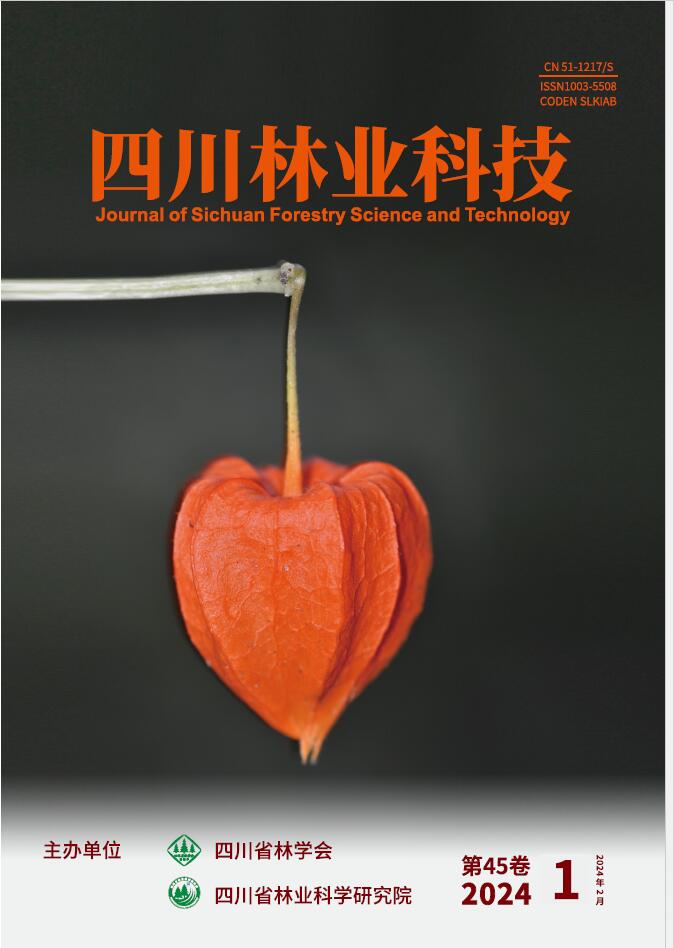
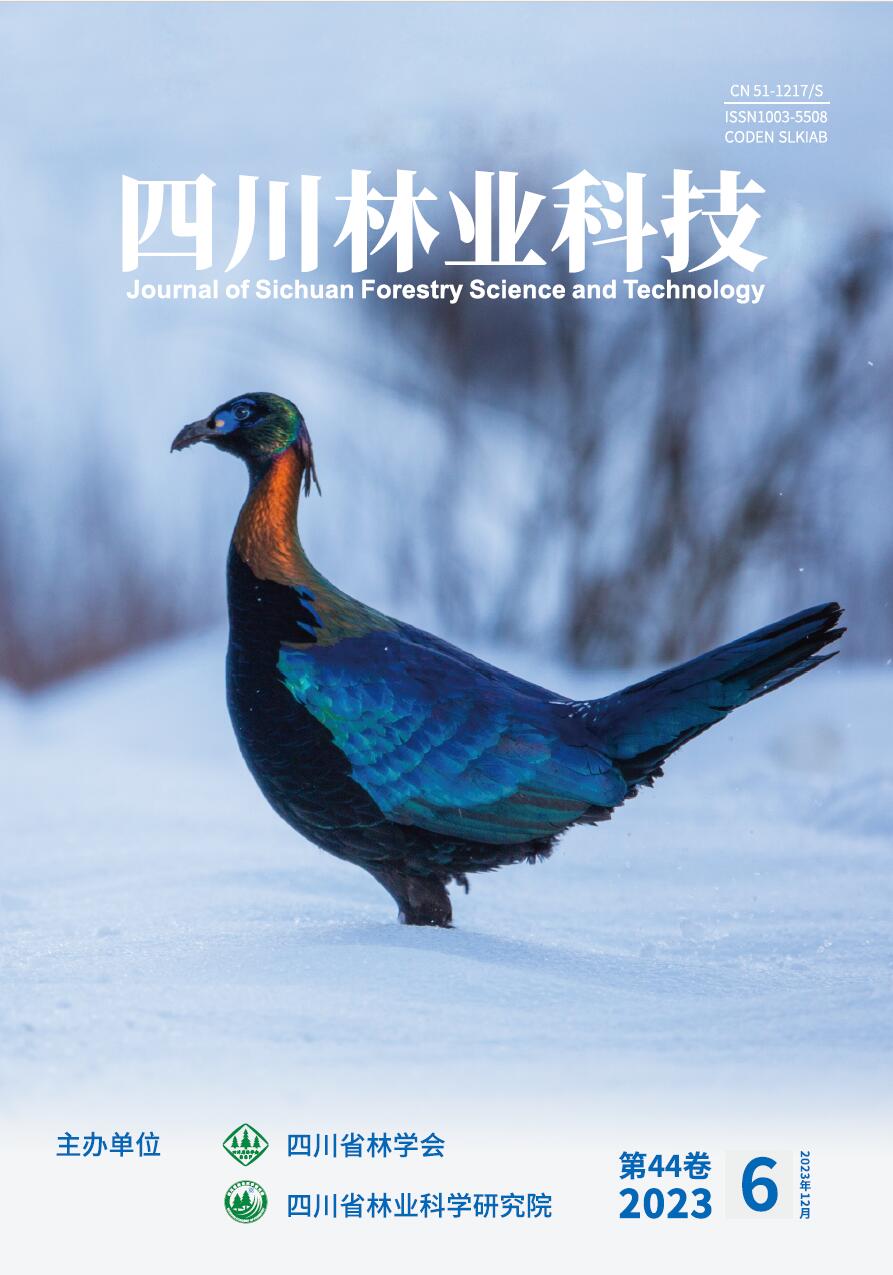
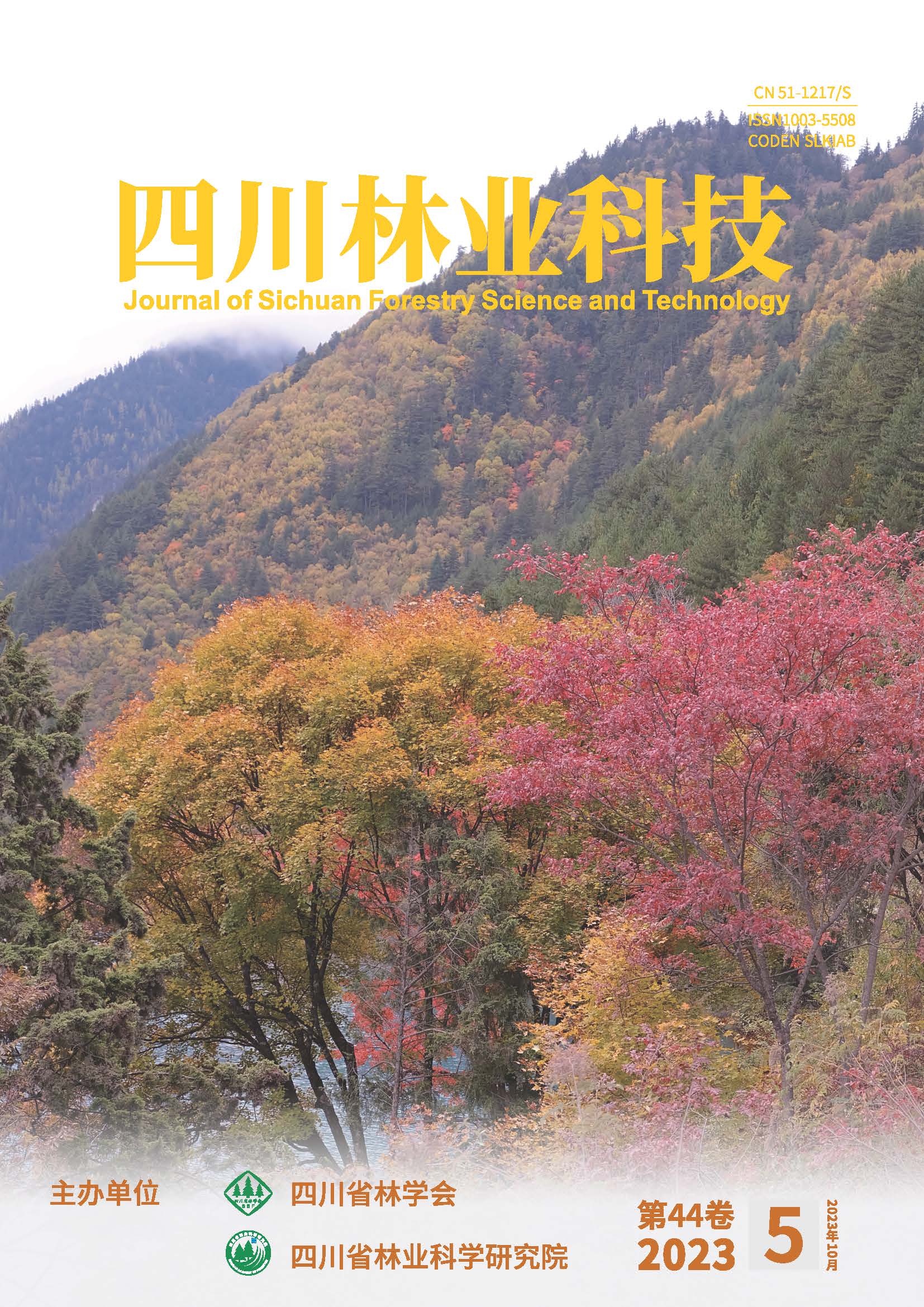
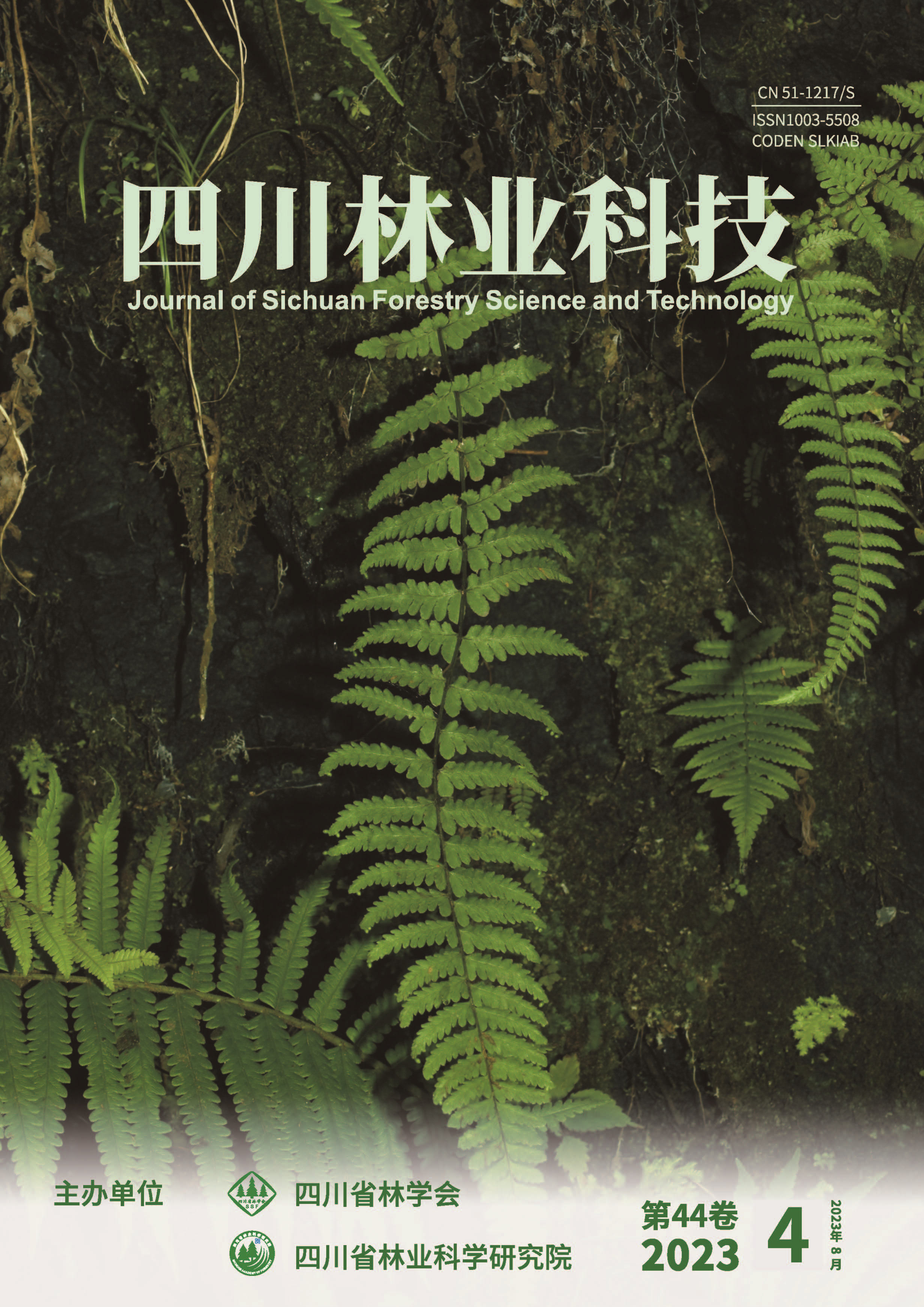
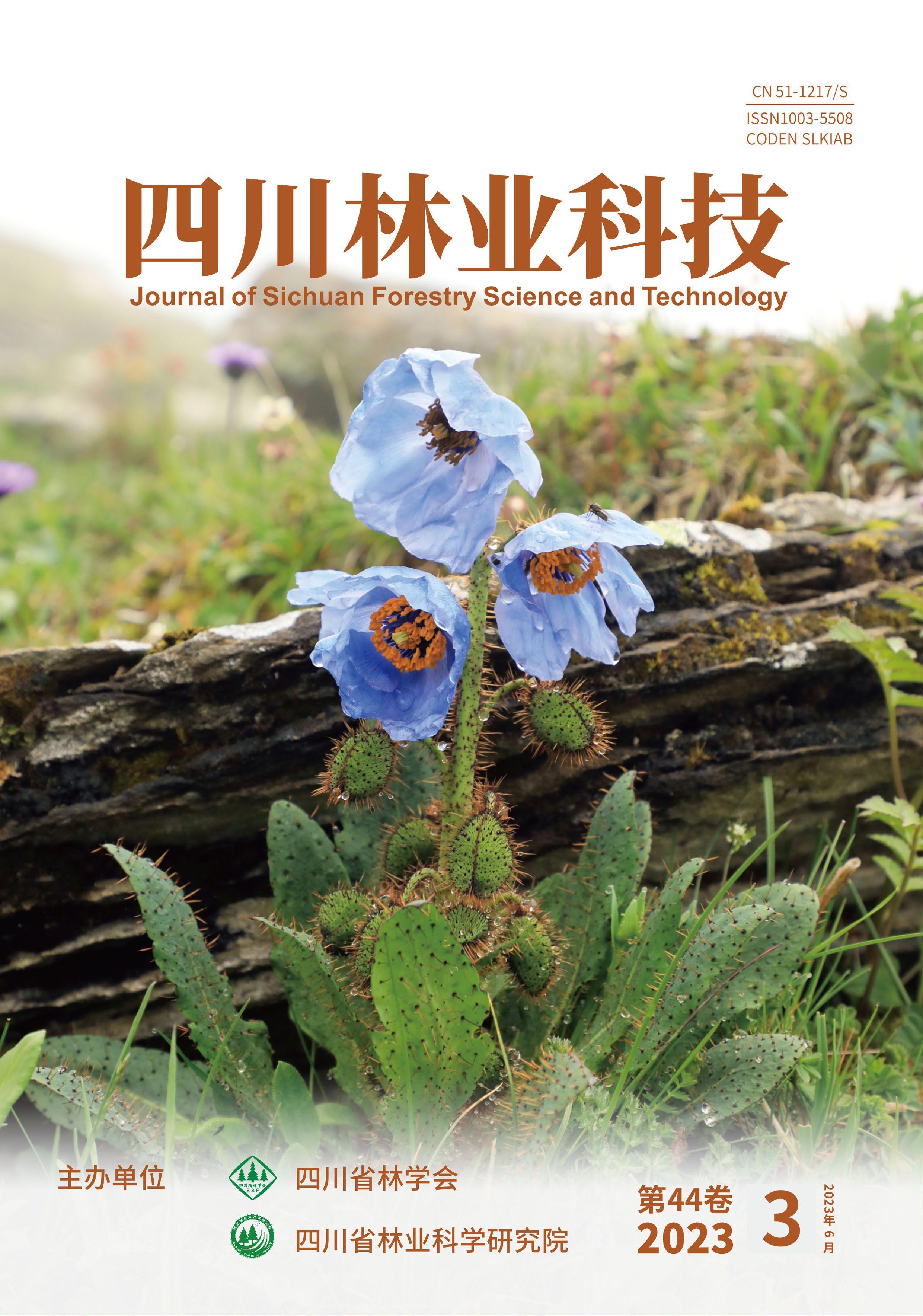
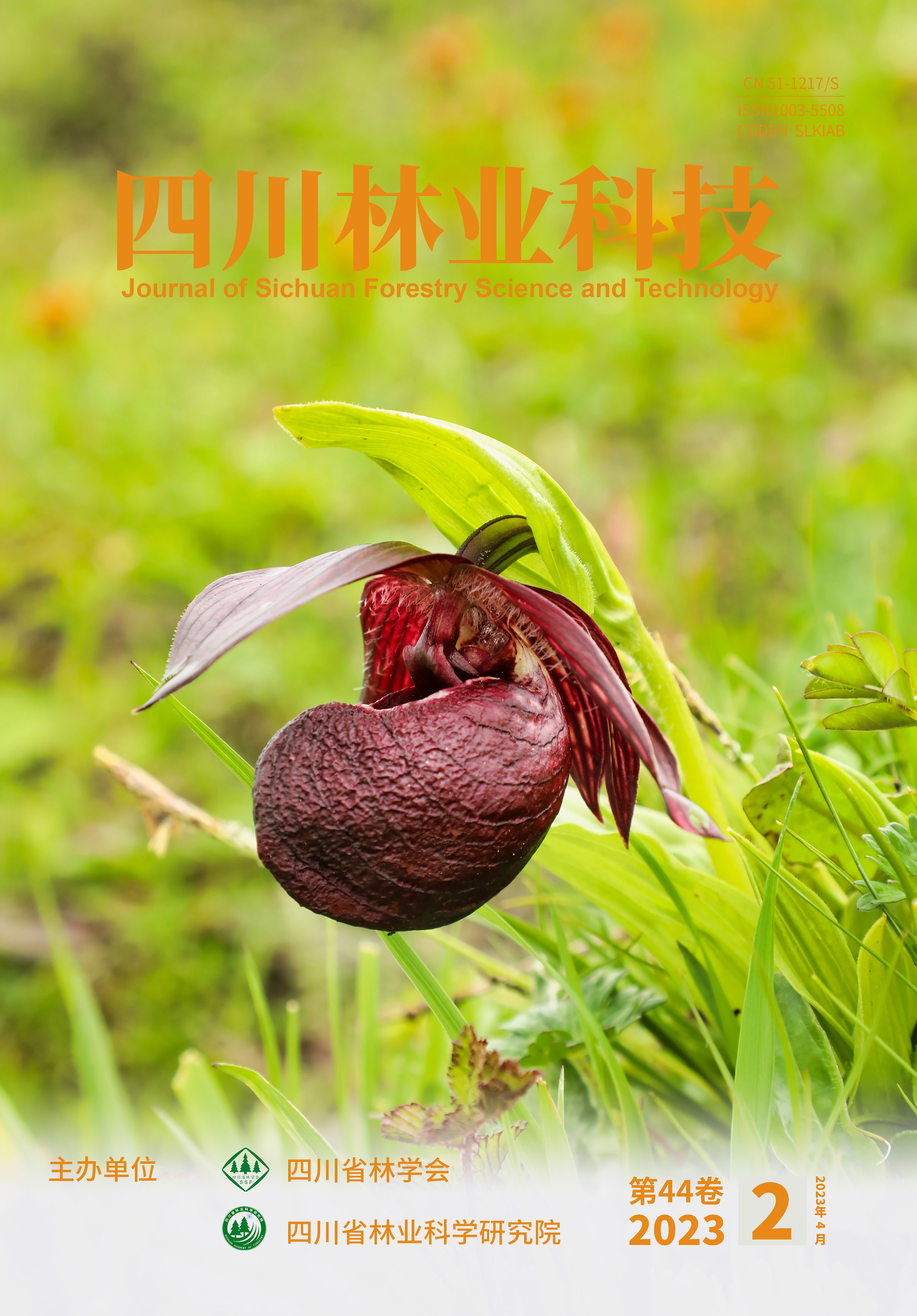
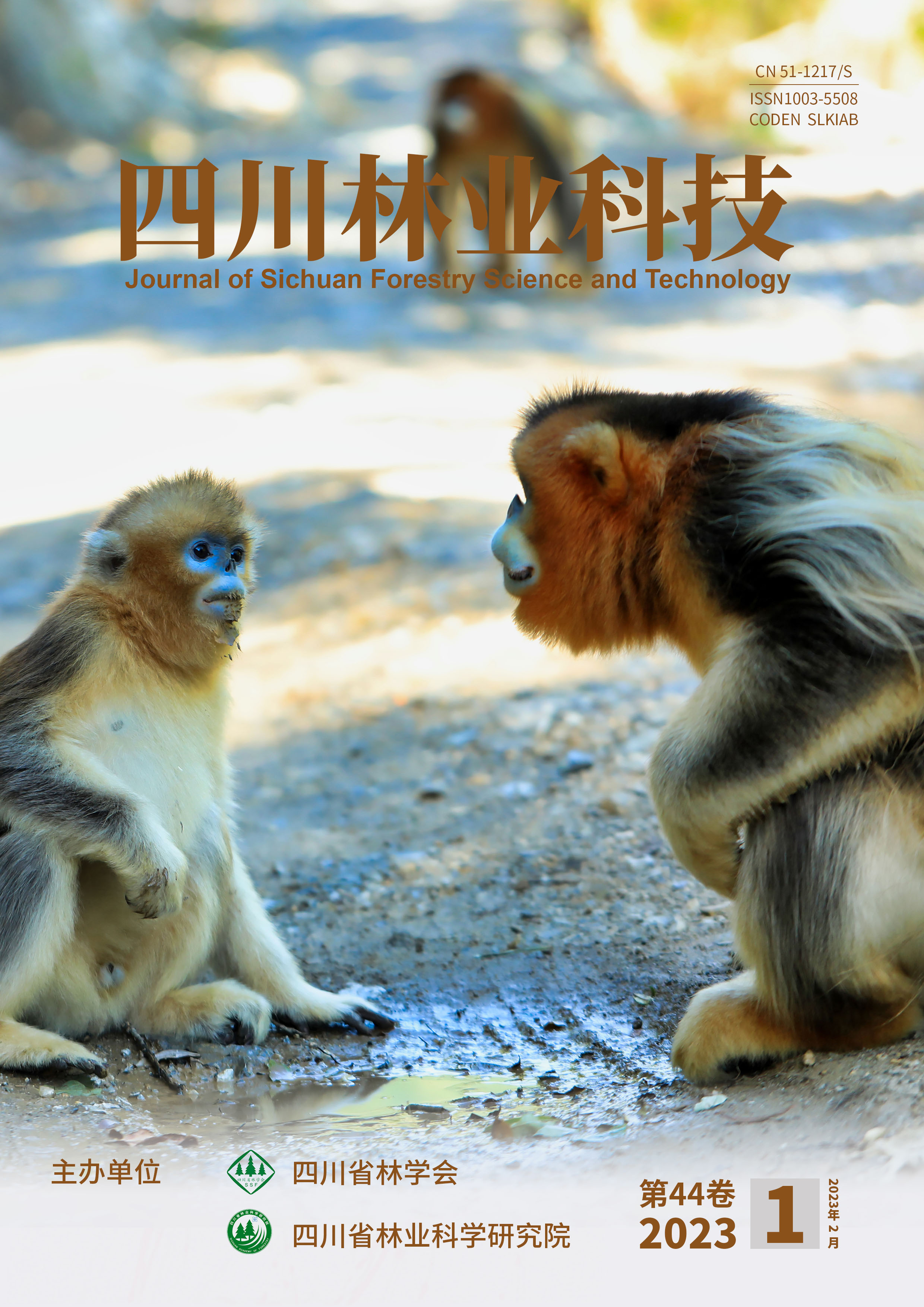


 DownLoad:
DownLoad: